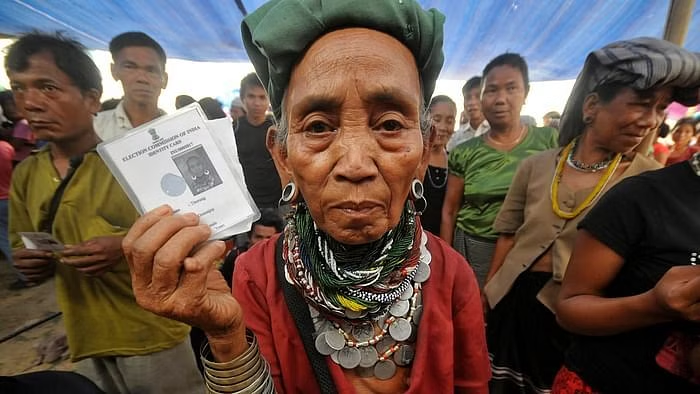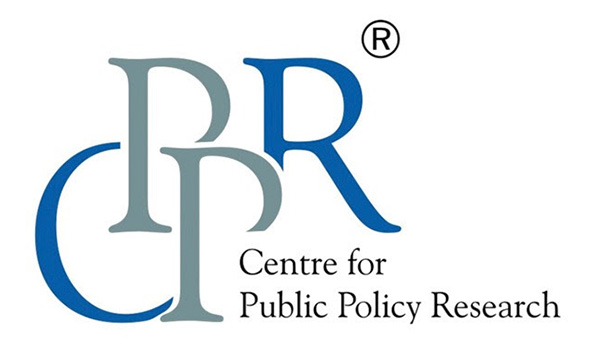Articles

Do Young Indians Participate In Elections?
November 1, 2023
Assembly Elections – 2023 | Madhya Pradesh – A Crucial Battle in Hindi Heartland
November 6, 2023Assembly Elections – 2023 | Mizoram – Ethnicity and Sub-nationalism: The Key Issues

Over 8.5 lakh voters are going to the election-booths on November 7, 2023, to elect 40 members of the Mizoram Legislative Assembly. The main contenders are the ruling Mizo National Front (MNF), the Zoram People’s Movement (ZPM), the Congress and the BJP. Since the formation of the state in 1987, either the Congress or the MNF alone or in alliance with other parties have ruled the state. The Congress leader Lal Thanhawla headed the government in the state four times, whereas the present Chief Minister Zoramthanga of MNF was in power in 1998, 2003 and 2018. The MNF, which was in alliance with the Congress, switched over to the NDA/ BJP camp in 2018. The ZPM, formed in 2017 through the merger of six regional outfits, made its presence felt in the 2018 assembly polls by capturing 8 seats (24.8% votes). The MNF won 27 seats (37.7% votes); the Congress 4 seats (30% votes) and the BJP 1 seat with 8.1% votes. In the 2019 Lok Sabha polls, the MNF won the lone seat in the state with over 45 percent of the votes.
Mizoram, carved out of the Lushai Hills district of undivided Assam initially as a Union Territory (UT) in 1972, attained full statehood in 1987. It borders tribal dominated areas of Myanmar and Bangladesh and the Indian states of Assam, Manipur and Tripura. This hilly state is predominantly an abode of various ethnic groups who are either culturally or linguistically linked to ‘Mizos’ whose origin can be traced to the ‘Zo’ tribe. Thus, of the 40 assembly seats, 39 are reserved for STs.
As per the 2011 census, Mizoram has a population of 10.97 lakhs, an increase from the figure of 8.89 lakhs in the 2001 census. The projected population of the state in 2023 is estimated to be 13.80 lakhs. More than 87 percent of the population belongs to Christianity, mainly to Presbyterian and Baptist churches, with the former having their main followers in northern districts like Aizawl, Kolasib, Mamit, etc., and the latter in southern districts. These churches are well organised, with a number of religious, cultural and civil society organisations upholding ethnic-sub-nationalist aspirations and secular-democratic values. Over 8 percent of the population are believers of Buddhism, 2-3 percent of Hinduism, and around 1-2 percent of Islam.
The long history of insurgency and counterinsurgency operations have considerably influenced the ‘psyche’ of the ethnic population in the state. The MNF, led by Laldenga, was at the forefront of such struggles for decades. The massive counter-insurgency operations of the 1960s, with the deployment of the Army and other security forces, created permanent imprints in the minds of the local population. The parties like MNF evoke such issues from time to time for exploiting the sentiments of the voters against the mainstream parties that were in power at the Centre during that period. The 1986 ‘Mizo Peace accord’ was a major landmark in the history of Mizoram. Laldenga was brought to the mainstream and installed as the new Chief Minister, replacing the incumbent Congress minister. It was only a short-term arrangement. Laldenga had to vacate the Chief ministership after six months; the Congress had again returned to power in the next assembly polls.
Though MNF is an ally of the NDA, their main electoral propaganda in the impending elections is based on such ethnic and sub-nationalist issues. Inheriting the legacy of Laldenga, the MNF uses the propaganda weapon of ‘ultra-Mizo nationalism’ by highlighting the ethnic and cultural bonds of Zo tribes with Kukis of Manipur, Chins in Myanmar, Refugees/ displaced tribes of Bangladesh, and Mizos of Mizoram. Interpreting the MNF’s alliance with the NDA/BJP as a tactical move for protecting the larger interests of the state and people, Zoramthanga claimed that the MNF would not endorse controversial policies or decisions of the NDA government or the ‘Hindutva agenda’. To give more credence to his propaganda, he highlighted the stand of MNF on issues such as the implementation of the Common Civil Code, the handling of refugees from Myanmar, or the displaced Kukis from Manipur, which were totally in variance with the directions/ policies of the centre. He also indicated that he would not share a platform with BJP leaders, including the Prime Minister, during the impending election campaign in various parts of the state. The MNF fears a backlash of Christian voters against the party if they openly join hands with the BJP/NDA, especially in light of the incidents of violence and mistreatment against the Kuki people in Manipur, where a BJP government is in power. Despite such propaganda, anti-incumbency and allegations of corruption have adversely affected the image of the MNF/ government. There are also allegations of corruption against the CM.
The main strategy of the Congress is to demolish the MNF propaganda on ethnic causes by highlighting the Manipur incidents and the approach of the BJP governments in the Centre and Manipur. The party anticipates a marginal consolidation of Christian votes in their favour. The anti-incumbency, misgovernance and corruption of MNF leaders are the other two issues of propaganda. Side by side, the Congress has announced a lot of freebies to the voters, such as welfare pension at the rate of Rs 2500 per family, LPG for Rs 750 to all house-holds etc. As the party draws its main support from village/ hilly areas, they have made promises to improve the conditions of farmers and village folk. They also assure that a clean, transparent and corruption-free government with a development-oriented agenda would be formed in the state if voted to power.
The ZPM has emerged as a force to be reckoned with in Mizo politics. Their main sources of support are civil society groups and independent outfits, especially among the youth in urban and hilly areas. The party, which won 8 seats in 2018, has further improved its image by capturing all 11 seats in the Lunglei Municipal Council elections held in 2023. Led by Lalduhoma, a former Indian Police Service (IPS) officer, ZPM anticipates primary support from Christian voters.
The BJP has yet to make any decisive impact in state politics. In 2018, they won the sole seat in Tuichawang, which has a sizable Chakma population. Two MNF legislators who held the posts of Speaker and a minister in the MNF government and resigned from the party and joined the BJP are party candidates from Mamit and Champa districts.
The stage is now set for a triangular contest with MNF, ZPM and the Congress as key players, with the BJP playing second fiddle with the sole aim of keeping Congress away from power. The BJP has fielded candidates in a majority of seats with a view to cutting Congress votes and thereby improving the prospects of other contestants, especially MNF. The crucial question is whether the BJP can net in uncommitted voters, especially minorities. Perhaps it may work partially in autonomous District Councils where the party can woo voters through incentives and concessions at the instance of the Centre.
The Congress, on the other hand, is exploring all means to return to power in Mizoram so as to make an opening in the North East where the party does not have government in any of the seven states. The strategy of the party is to improve its performance through tacit understanding with splinter parties or groups such as Zoram Nationalist party, Mizo People’s Conference, etc. They also explore the possibility of a post-election alliance with ZPM if no party gets a majority in the polls. After all, Lalduhoma had past connections with senior Congress leaders, including former Prime Minister Mrs. Indira Gandhi!
The ZPM leadership laughs aside such speculations. They were successful in building up their support base through organised campaigns on prohibition/drug-menace and other developmental issues in the state. Meanwhile, Mizo Zirlai Pawl (MZP), a leading students’ organisation in the state, has warned political parties not to field Mizo women married to non-Mizo. Their target appears to be a Congress woman candidate from the Lunglei South constituency whose husband’s Mizo identity was challenged from certain corners. More than one dozen female candidates are in the fray, representing the major political parties in the state. Perhaps this transformation in the approach of political parties to accommodating a good number of women in the electoral fray may be an open endorsement of the recent legislation enacted by the Parliament ensuring 33 percent reservation for women in Lok Sabha and State Assemblies! Let us wait and watch how they fare in the polls.
Views expressed by the author are personal and need not reflect or represent the views of the Centre for Public Policy Research.
K V Thomas is Senior Fellow at CPPR. He has over 36 years of distinguished service in the Intelligence Bureau (Ministry of Home Affairs) of India where he rose to become the Associate Director. He can be contacted at [email protected]

